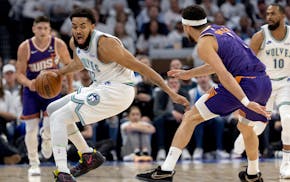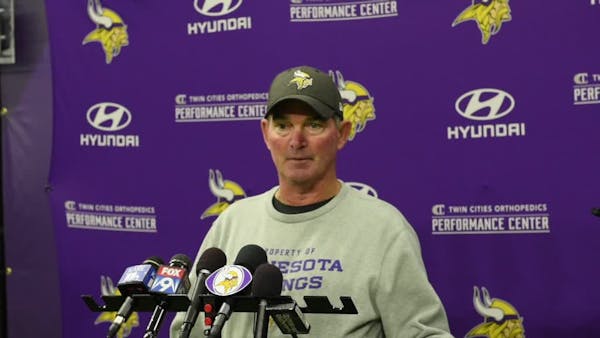The red zone is the area of the field where communication and chemistry between a quarterback and his receivers might be the most important. Defenses are able to play tighter since they have less ground to cover.
"Your timing when the ball is being released, where it's being thrown has to be that much more precise," Vikings quarterback Kirk Cousins said.
Except quarterbacks, including Cousins, are typically less precise in the red zone.
In 2017, only one quarterback had a higher completion rate in the red zone than his overall completion percentage — Eagles quarterback Carson Wentz, whose 64.9 red-zone percentage outpaced his overall 60.2 mark.
Cousins had a dip of 11.9 percent (64.3 to 52.4), the 20th-biggest drop among quarterbacks who had at least 14 passing attempts per game. His 52.4 red-zone completion percentage was 15th among those passers.
In his three seasons as a starter, Cousins had one good year in terms of that statistic — 2015. That season, Cousins had a 64.1 red-zone completion percentage (fifth in the league) and didn't throw any interceptions in that part of the field.
He threw three last season and two in 2016 while hitting just 47.5 percent of his passes.
"Red zone football is unique," Cousins said. "The windows are smaller. There's less grass for the defense to defend so the players are going to be less spread out."
The success or failure of a red-zone offense doesn't always hinge on the quarterback. The receivers have to do their part in getting open in those tight windows.
This might be where having targets such as Adam Thielen, Stefon Diggs and tight end Kyle Rudolph came in handy for the Vikings last year.
Case Keenum had a drop of only 5.6 percent in the red zone, clocking in at 62 while throwing 16 touchdowns and no interceptions last season. This came after he completed just 43.2 percent in the red zone in 2016 for the Rams.
Perhaps the Vikings receiving corps also will help lift Cousins' red zone numbers.
"The ability to separate down there is critical because the ball is on you fast and there's people closer to you so it all marries together," receivers coach Darrell Hazell said. "You have the timing, and the ability to find out is it man, is it zone, and then find those windows if it is zone."
Added Cousins: "When they're coming out of their break, the angles they're taking and then understanding the defenses and routes that the defense is conceding as opposed to the ones they're trying to take away, all that has to be studied and understood."
Cousins said the same goes for everywhere else on the field, but numbers show it becomes a little more difficult to accomplish in the red zone.
Chris Hine is the lead writer for North Score, the Star Tribune's sports analytics beat. startribune.com/northscore E-mail: chris.hine@startribune.com
First-round picks could be on the trading block on day 1 of the NFL draft

KAT in early foul trouble, but came back big in second half

Another big Vikings need might not be addressed early in draft

Wild roster 2024-25: Who stays, who goes after playoff failure?

